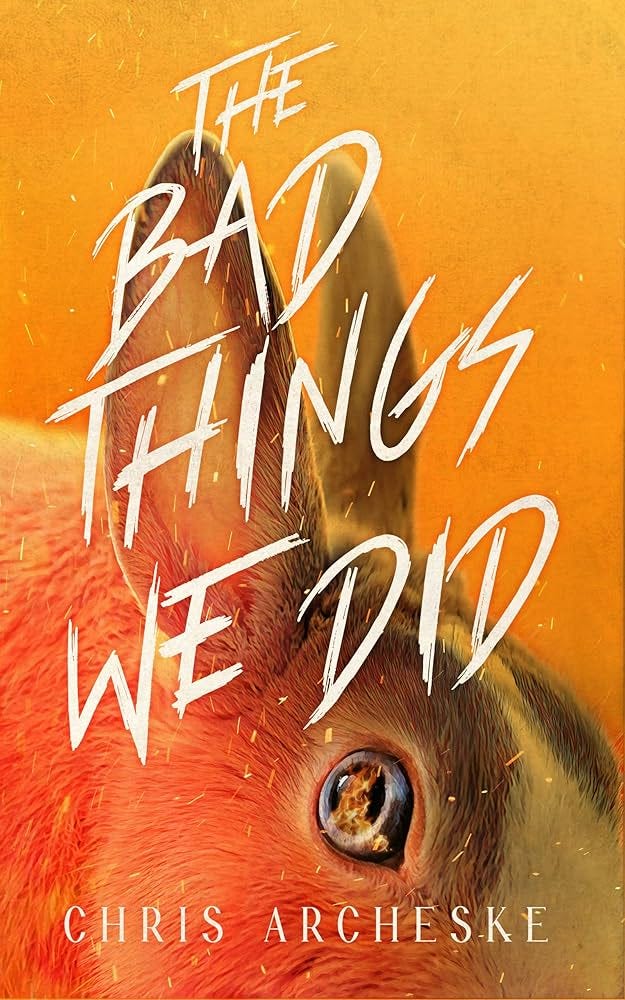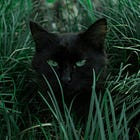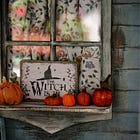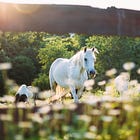Welcome back to another Wizard of Claws interview!
In my eternal quest to find new horror to consume, the cover of Chris Archeske’s anthology The Bad Things We Did immediately stuck out due to its ominous animal vibe. (My favorite kind of vibe.) I was even more excited to find an animal rights story tucked inside its pages. “Monstrous” tells the tale of Reed, a man who goes viral after a video of him rescuing a dog hits the internet. He builds up a brand for such daring feats, but when presented with an opportunity to be the hero after the cameras stop rolling, his true colors come out. It’s a spooky little story perfect for Halloween and animal lovers.
General Questions
Can you share a little bit about yourself, including how you became interested in creative writing?
My name is Chris Archeske, and I’ve been writing for as long as I can remember. I had a third grade teacher who taught me most of what I know about creative thinking. I recall the times she would read the class two separate and unrelated stories, then ask us “what if” questions like, “What if the characters from Book A met the characters from Book B? What if they switched houses for a week?” etc. It was fun to consider the possibilities, and I just never stopped thinking like that. I truly believe creative writing at its core is just asking questions and then answering them yourself.
Many of us have childhood dreams of becoming writers. When did you decide to give it a shot?
My mom was a licensed projectionist for a local theater, so I spent most of my childhood at the movies. I fell in love with film pretty instantaneously, and I knew I wanted to write a movie of my own one day. So I wrote pretty consistently throughout my childhood. It wasn’t until I had graduated high school that I really took writing seriously.
Editors are essential, but it’s always helpful to get a story as polished as possible before sending it to them. What are your best self-editing tips?
Editing is my weakness in the sense that I self-edit along the way, which slows down my actual process of writing. I think one of my greatest strengths is creating a story that flows and is well-paced, but that’s only achievable because I’m constantly re-reading and editing as I go. So that definitely cuts down on my daily word count. My best advice for self-editing? Text to speech. You’ll literally hear the mistakes as your story is being read to you.
One thing I love about horror is that no matter how disturbing or violent a story gets, there’s always an ending. It may be good or bad or ambiguous, but at least it ends at some point. In the real world, we never know when horrors will end, and it often seems like persecution, hatred, and violence have existed forever and will persist in perpetuity. What do you find most compelling about the horror genre?
I love that! And you’re right. The horror genre is like a roller coaster. It’s a safe way to experience something that should be dangerous. I love the way horror makes us view something differently, the way Jaws changed going to the beach, or Psycho changed taking a shower. In my own writing, I love taking something ordinary like that and finding a way to make it extraordinary. That’s why I loved writing “The Parachute” so much. We all played with one as kids. What if it was hiding something sinister?
In what ways can/does fiction shape the way people think about animals?
Fiction can impact our reaction and perception of animals in both good and bad ways. Bringing up Jaws again, author Peter Benchley often said he regretted writing the book as it exacerbated the general public’s fear of sharks and glorified false beliefs about them. On the flipside, I think fiction can shape our positive association with animals, too. Look at Charlotte’s Web by E.B. White. It’s hard not to be empathetic to spiders and pigs after reading a story like that.
Story Questions
In the book’s afterward, you mention that “Monstrous” was inspired by seemingly ordinary actions staged and filmed to go viral on social media. (I’m not sure if you’re aware of it, but there are massive accounts on social media that stage “animal rescues” much like Reed’s.) Do you have any thoughts on the performative nature of activism (of any kind) on social media? Does the good outweigh the bad?
I don’t think “performative” activism is activism. If you’re doing something for likes and followers, or if you’re intentionally setting up a dangerous scenario that requires your help or intervention for a resolve, then you’re not being an activist. Life is cruel enough on its own without the push of our own agenda.
You also wrote that this story was inspired by “The Three Billy Goats Gruff.” How do you think the stories about animals we read as children influence our thoughts on animals as we age?
Going back to Charlotte’s Web, I still can’t separate real pigs from the Wilbur character from the story. I think if a story has any emotional pull involving an animal, good or bad, it’s tough to make the separation from that animal in real life.
I find it intriguing, and a bit perplexing, how many people refuse to read stories if there’s even a hint of animal cruelty. Why do people have such a visceral reaction to animal endangerment?
Animals don’t always get a choice, so I think it’s difficult for people to imagine something bad happening to a creature who was never given an option. So readers exercise their own power by choosing avoidance.
As soon as I saw the cover of The Bad Things We Did, I knew I had to read it. No matter the age range or genre, animals can be found on book covers everywhere. What do you think makes animals such compelling artistic subjects?
Thank you! My cover designer, Kristina Osborn, created that cover and knocked it out of the park. I think animals make compelling artistic subjects because, well, they’re timeless. Animals generally look the same across generations. People, however, not so much. People are always finding new ways to dress, accessorize, wear makeup, and style hair. It’s easy to identify the time period of a person riding a horse versus a horse by itself. With this in mind, I think the cover for The Bad Things We Did will be just as effective 50+ years from now.
Reed was surrounded by people during the animal rescues that made him famous, yet when he finally gets the chance to do it on his own, we see his true colors. Did Reed ever care about animals? Was his compassion corrupted by fame, or was it all an act from the beginning?
I think Reed cared about animals, and I’d like to think if fame hadn’t gotten to his head, he never would’ve considered putting an animal in harm’s way. I’ve heard crazy stories of addicts doing horrific things to get their next fix, and this was unfortunately Reed’s.
Regarding your story “The Candy Cane Man,” you wrote, “I’ve found that many writers—gay or otherwise—don’t explore the dark side of LGBTQ+ characters in fear of the reactions they’ll receive from readers (‘You’re portraying the community in a negative light! You’re canceled!’).” As someone involved in animal rights advocacy, I’ve seen this same kind of infighting over how we’re perceived by the public and what sort of activism approaches are the most effective. Why is it important to show the dark side—or, in some cases, the reality—of being a person in a historically marginalized or minority group?
That’s just it—the reality is that all people across all classes, groups, cultures, and backgrounds have a dark side, and we are equally capable of doing bad things, purposefully or not. Why should we pretend otherwise? I find that boring and, more importantly, unrealistic.
What do you hope readers will learn from Reed’s story?
I hope the takeaway is that sometimes what you think you want will cost you what you already have. And of course, be kind to animals. You never know if they’re friends with giant flesh-eating trolls.
Final Questions
How can readers find you and your stories online?
You can find me on Instagram and TikTok: @chrishasastory. And you can purchase my book here!
Any upcoming projects?
Currently working on multiple projects, but my next one’s a horror novella called Beau that I’m really excited about. The cover features a mannequin with a bloody hand. I’ll let your own mind think of the possibilities.
Anything else you’d like to share?
Thank you for taking the time to talk with me! This was fun!






